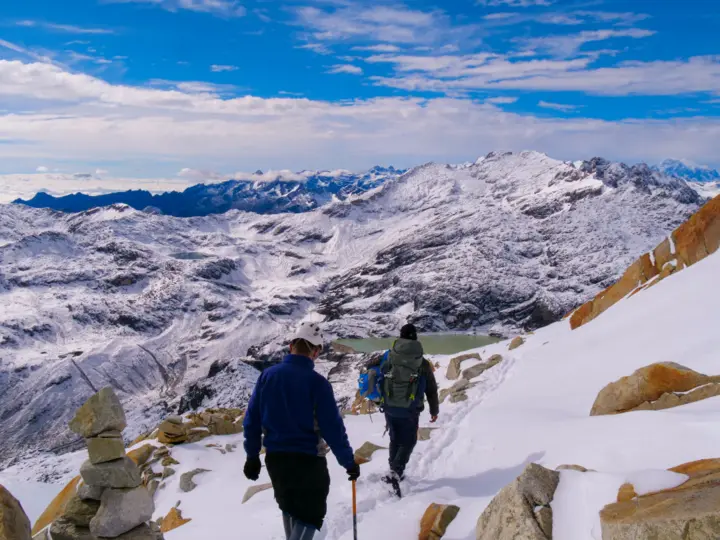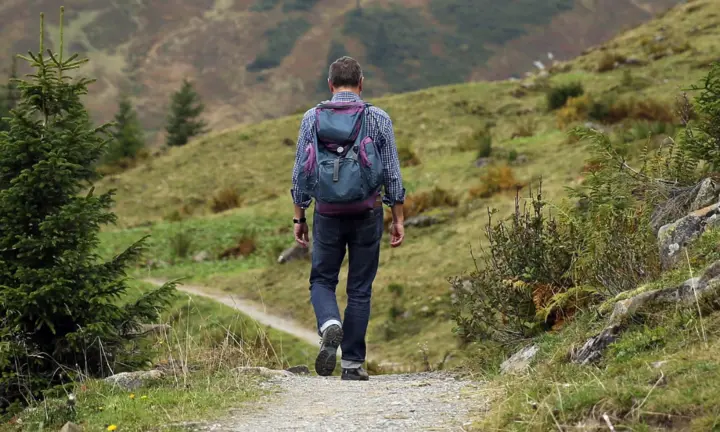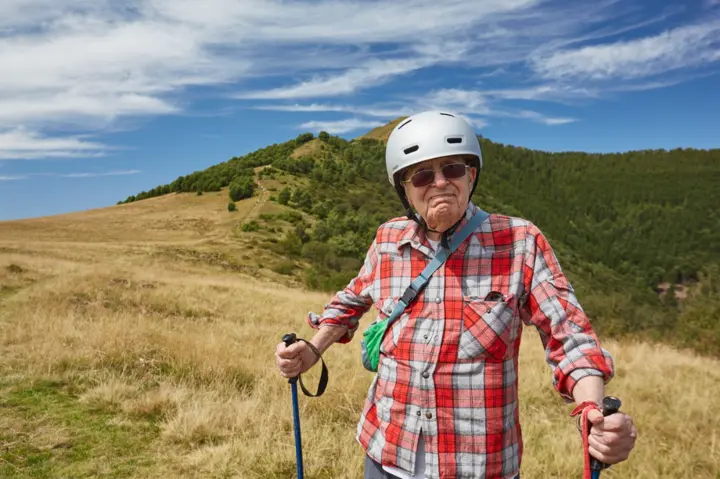The amazing benefits of mountaineering for your body, mind and soul

1. Improve physical fitness
Show key points
- Mountaineering offers a comprehensive full-body workout that enhances endurance, strength, and cardiovascular health while helping prevent chronic diseases.
- The challenges faced during mountain climbs cultivate mental toughness and perseverance, revealing the true strength of your character.
- Preparing for a climb encourages the development of a structured and consistent fitness routine that can benefit long-term health and readiness.
- ADVERTISEMENT
- Joining hiking and mountaineering groups fosters a strong sense of community and can lead to meaningful, lasting friendships.
- Reaching a mountain summit rewards climbers with stunning, panoramic views that few others get to witness firsthand.
- Spending time in nature while mountaineering reduces stress, boosts self-esteem, and promotes better mental health through physical activity.
- The aerobic demands of climbing raise good cholesterol levels and lower the risk of heart disease by improving circulation and reducing arterial plaque.
Mountaineering is a great exercise for your whole body. It requires strength, stamina and coordination. Plus, it's super fun! Mountaineering is an excellent aerobic exercise. Research suggests that it can help reduce the symptoms of chronic diseases such as type II diabetes, heart disease, obesity, and cancer. It also has many benefits for your overall health, including lowering blood pressure and improving the functions of your heart, lungs and circulatory system. In addition, regular mountaineering can strengthen your muscles, improve endurance levels and may even improve sleep quality thanks to the release of stress-relieving endorphins in the body.
2. Learn to persevere
Recommend

Mountaineering is an excellent way to build willpower. It's not easy to climb mountains day after day, but the joy and accomplishment you feel when climbing each is addictive. You have to face difficulties head-on while climbing, which tests your strength and determination – especially when you're climbing for hours on end and just want to give up. And here we discover how strong our will really is.
3. Establish a healthy routine

Unless you're already in excellent physical shape, most experts recommend that potential climbers and hikers spend at least three months preparing their bodies for the trip. This training should include a combination of flexibility exercises, cardiovascular exercises, and strength training to help ensure success and safety during the expedition. There's no one-size-fits-all approach to marathon training, but many runners find that the combination of running, strength training and yoga works well. You may find that you settle into some kind of routine as your training progresses. If you can keep up with your fitness routine even after reaching the peak or completing hiking, staying fit will be easy for you. This way, if you have any other opportunities to climb or hike, you'll already be prepared.
4. Social benefits
Hikers and climbers are great, recognizable people. They tend to be positive, open-minded, and very welcoming, and share similar goals to appreciate the beauty of nature by reaching the top of the mountain. And it's likely to be lifelong friendships when you spend time together in these wonderful places. If you're new to trekking or climbing, finding a hiking partner is easy with mountain clubs, hiking groups, and social media platforms.
5. Breathtaking view

Longing for something is easy, but it really takes time and effort. Similarly, many of us see breathtaking views from the mountain peaks and feel like experiencing them firsthand – which is entirely possible with some planning! When you finally reach the top after making time in your schedule, you'll be met with an incredible view that few people will have. Unless it's foggy or smoky outside, the panoramic view is sure to take your breath away.
6. Improve mental health
Hiking and mountaineering not only improve different parts of your physical health, but it also improves your mental state. Research has shown that participating in group outdoor activities slightly reduces pessimistic and repetitive thoughts about oneself – which are generally associated with anxiety and depression. Exercising in nature is a great way to release endorphins; it stimulates the brain's happiness-producing receptor cells, making you feel good while giving those worries some much-needed energy breather! Mountaineering, for example, requires focusing on achieving a goal with others. By focusing on constructive tasks, such as pulling yourself up a cliff or cautiously navigating your way through a glacier to the top of the mountain, you not only improve your self-esteem, but also your sense of self-worth. Moreover, it makes your brain work harder to solve problems which then leads to better mental flexibility and healthier brain function overall.
7. Reduce the risk of heart disease

Not only is mountaineering good for your cardiovascular system, but it also comes with a host of other benefits. It's difficult and can be stressful at times, forcing your heart to work harder and pump blood faster. This provides oxygen-rich blood throughout your body, helps reduce the risk of heart disease, and strengthens muscles. In turn, this gives you more energy and improves overall fitness levels. The physical act of walking and climbing increases the amount of high-density lipoprotein in your blood, known as good cholesterol. This type of cholesterol helps your body collect bad cholesterol — LDL — and transport it to your liver for disposal. By increasing your heart rate while walking or climbing, both sports simultaneously help lower your triglyceride levels; when levels become too high, they can contribute to plaque buildup in your arteries.








